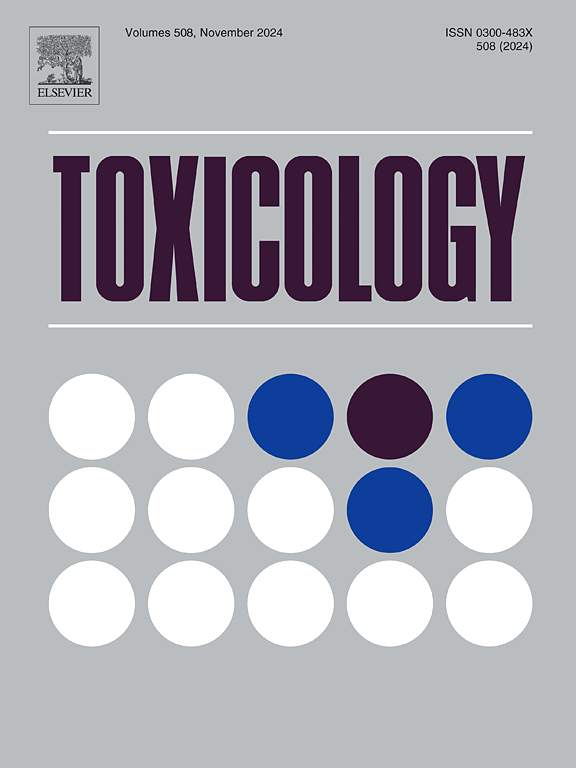在高通量谱分析中评估体外外源代谢对雌激素化学生物活性的影响。
IF 4.6
3区 医学
Q1 PHARMACOLOGY & PHARMACY
引用次数: 0
摘要
高通量分析方法,如高通量表型分析(HTPP)和高通量转录组学(HTTr)是用于表征化学物质生物活性和潜在危害的新方法。为了提高在化学筛选过程中识别潜在体内危害的能力,我们之前将这两种检测方法与体外代谢平台海藻酸盐固定化代谢酶(AIME)相结合。在这项研究中,我们使用AIME平台,通过在VM7Luc4E2乳腺癌细胞的雌激素受体转激活试验(ERTA)中筛选另外40种化学物质,预计这些化学物质在代谢过程中具有不同的活性和/或活性变化,从而扩展了我们之前对三种雌激素参考化学物质的研究结果。结果表明,HTTr可以检测雌激素受体(ER)的激活,并通过ER基因特征富集分析识别代谢诱导的雌激素性转移的化学物质。此外,HTPP可以检测代谢影响化学细胞毒性的病例,以及AIME产生的代谢物与其各自的母体化合物相比产生不同生物活性谱的病例。值得注意的是,我们的研究结果强调了化学物质在代谢条件下具有非常不同的表型和基因表达谱的例子,这在大多数永生化细胞系模型的传统化学筛选中是观察不到的。将使用AIME平台的代谢整合到高通量分析分析中,可以通过提供更全面的危险特征来帮助下一代风险评估。本文章由计算机程序翻译,如有差异,请以英文原文为准。
Assessing the impact of in vitro xenobiotic metabolism on estrogenic chemical bioactivity in high-throughput profiling assays
High-throughput profiling assays such as high-throughput phenotypic profiling (HTPP) with Cell Painting and high-throughput transcriptomics (HTTr) are new approach methods that have been used to characterize the bioactivity and potential hazards of chemicals. To enhance the ability to identify potential in vivo hazards during chemical screening, we previously coupled both assays to an in vitro metabolism platform, Alginate Immobilization of Metabolic Enzymes (AIME). In this study, we used the AIME platform to expand upon our previous results for three estrogenic reference chemicals by screening an additional 40 chemicals anticipated to have varied activity and/or shifts in activity with metabolism in an estrogen receptor transactivation assay (ERTA) in VM7Luc4E2 breast carcinoma cells. The results demonstrated that HTTr could detect estrogen receptor (ER) activation and identify chemicals with metabolism-induced shifts in estrogenicity via ER gene signature enrichment analysis. Additionally, HTPP could detect cases where metabolism impacted chemical cytotoxicity and cases where metabolites generated by AIME produced distinct bioactivity profiles compared to their respective parent compounds. Notably, our findings highlighted examples of chemicals that had very different phenotypic and gene expression profiles between metabolic conditions that would not be observed in traditional chemical screening in most immortalized cell line models. Incorporation of metabolism using the AIME platform into high-throughput profiling assays could help inform next generation risk assessment by providing more comprehensive hazard characterizations.
求助全文
通过发布文献求助,成功后即可免费获取论文全文。
去求助
来源期刊

Toxicology
医学-毒理学
CiteScore
7.80
自引率
4.40%
发文量
222
审稿时长
23 days
期刊介绍:
Toxicology is an international, peer-reviewed journal that publishes only the highest quality original scientific research and critical reviews describing hypothesis-based investigations into mechanisms of toxicity associated with exposures to xenobiotic chemicals, particularly as it relates to human health. In this respect "mechanisms" is defined on both the macro (e.g. physiological, biological, kinetic, species, sex, etc.) and molecular (genomic, transcriptomic, metabolic, etc.) scale. Emphasis is placed on findings that identify novel hazards and that can be extrapolated to exposures and mechanisms that are relevant to estimating human risk. Toxicology also publishes brief communications, personal commentaries and opinion articles, as well as concise expert reviews on contemporary topics. All research and review articles published in Toxicology are subject to rigorous peer review. Authors are asked to contact the Editor-in-Chief prior to submitting review articles or commentaries for consideration for publication in Toxicology.
 求助内容:
求助内容: 应助结果提醒方式:
应助结果提醒方式:


